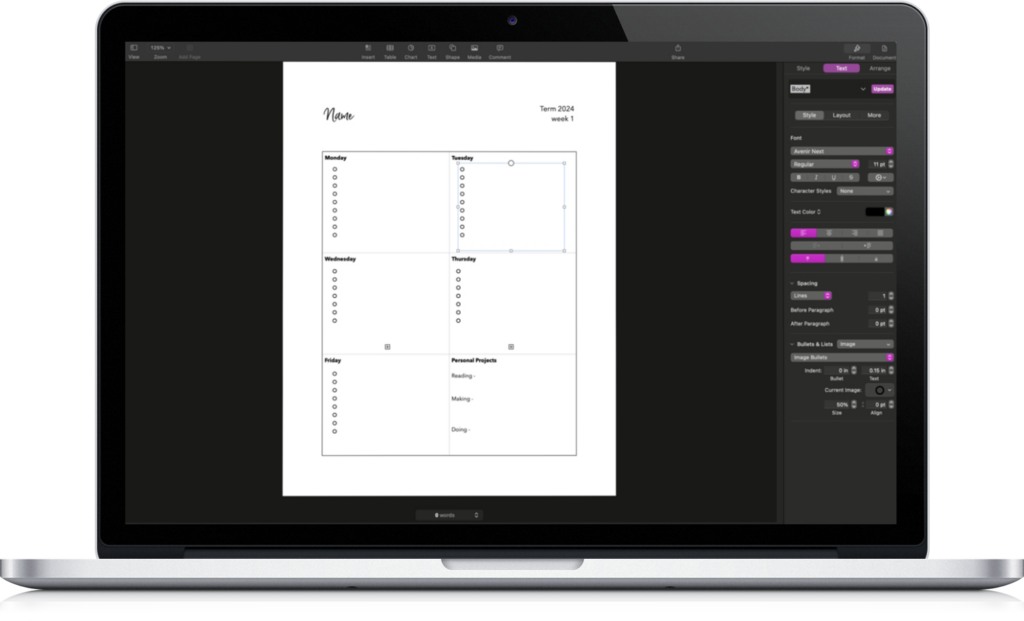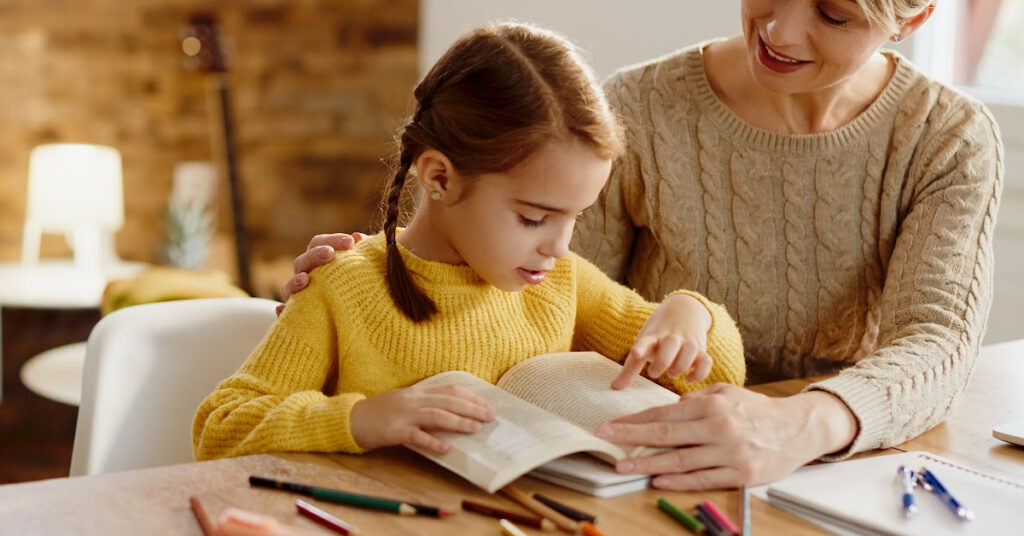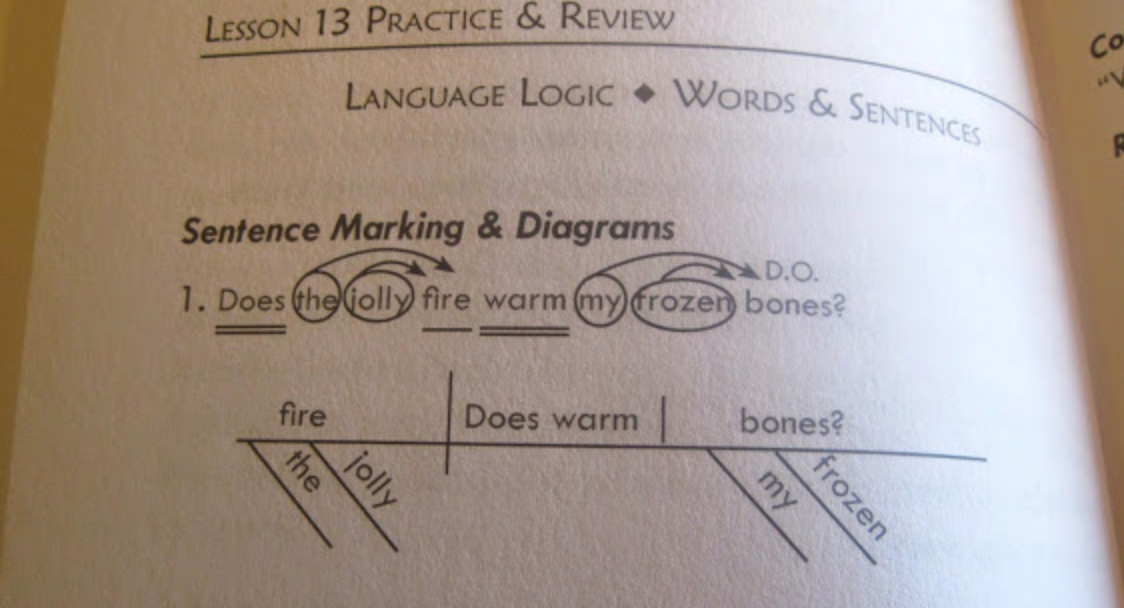History should never be boring.
History is the study of people – and people always have stories. Stories of individuals, stories of battles, stories of cultures, stories of legends – history is inherently fascinating and relevant.
Dates are secondary to people. Dates are useful insofar as they help us place people in the right place within the flow of the story of history.
So, of course history should be told as a narrative, for that’s what it is. History is a compilation of stories and should be told as such, especially to children, who do not need to know abstract puzzle pieces to why things happened the way they did. Children should first come to know the big names and the big events simply as stories of the past.
Therefore, it is perfectly natural and legitimate for history to be learned primarily – perhaps even exclusively – through reading. Reading is the only way any of us come to know history, and any sort of sugar-cube pyramid or chicken-mummy activity might provide us with memories of together-projects, but it does little for the actual learning of history itself. Do the clay map of Egypt (why are all the projects about Egypt, anyway?) for the fun or for the family memory, but if you want to learn about Egypt, you must read.
And just why is it that most of these homeschool history projects ARE about Egypt? Egypt is fascinating, and Egypt is typically where classical history cycles begin.
How many families actually make it through an entire history cycle? How many families make it through an entire history cycle more than once in a single student’s elementary education?
When I was tutoring and teaching classes for homeschooling families before homeschooling my own, it sounded from the mom-talk I listened in on that no one actually did it. They all started. Egypt was a bunch of fun. Everything fizzled from there. I wasn’t reading blogs yet; my homeschool research involved reading catalogs and books and eavesdropping on homeschool moms swap real-life stories and concerns when they came to pick up their middle school kids.
Reasons for a 3-year history cycle
So, when my own children had not even started learning their letters, I decided through my own mulling over of what I’d heard, knowing I was just as likely as anyone to not finish what I started and having much of the “my kids aren’t even 5 yet and I know I’m going to mess this up” early-homeschool trepidation, to do a 3-year cycle. Everything I saw and everyone I knew was doing either a 4-year or 5-year cycle – and I knew of no one in my circle of acquaintance whose middle school child had completed a single cycle, much less two.
So, if the cycle is 3 years and it takes more time, then you’re at 4 and still ok.
Moreover, if the cycle is 3 years, you’re forced to take the overview route which the early cycles are supposed to be. There is no getting bogged down in details when you’re sweeping through history at that rate. Three years is only enough time to get the big picture and general sweep – which is all the history is supposed to be in elementary anyway. It is to give them the pegs and the outline to be filled in later by deeper study and free-time reading.
The reason I heard for why families didn’t finish their cycles on time is that they didn’t finish the curriculum in a year, and they wanted to finish before moving on. So, a 4-year cycle was taking 6 years or abandoned to catch up middle school kids on the American history they hadn’t yet reached.
But I was fresh out of college. You know how many college history or literature professors finish everything in a textbook or in a course outline? None. They pick and choose from the selections provided in the textbook and we move on. They’re survey classes. Why couldn’t I exercise the same freedom? I could, and I have.
I was in the medieval year of our first history cycle when I went to my first Classical Conversations information meeting. Although we chose not to do CC, I am glad I went to that meeting. CC does a 3 year history cycle. The parents committed to that program are propelled and held accountable to moving through history at that rate. I felt validated for my decision and relieved that other people had proved it was possible.
Another thing I picked up from that CC meeting was learning the entire Veritas timeline in a year, every year. Until that time any real-life advice or stories I’d heard said that the Veritas timeline was an ideal no one actually ever memorized. CC made it possible with a song and constant repetition. I adopted the song, added it to Morning Time for constant repetition, and we have those historical pegs down pat.

HOMESCHOOL AUDIT
Make next year better based on how this year went.
Download the free homeschool audit and use this year’s experience to make next year better.
History comes to us by books, not facts
How we do history can be divided into two parts: school reading and free reading. Sure, we sing the timeline song in Morning Time and in 7th grade I give the student a Book of Centuries, but for the most part, history comes to us through books.
For school reading, I read aloud two or three chapters from a spine narrative survey twice a week and at least one child, sometimes each child, narrates. That’s it, except for our review game at the end of each 6-week term.
However, I most of my children’s historical knowledge comes from their own independent free reading. And that means that my early readers and prolific readers know vastly more history than my average-to-late bloomers. That’s ok. I don’t count my later reader as behind. My prolific readers needed grist for their reading mill. What is better than a bunch of biographies, missionary stories, history stories, and legends?
Each summer, when I am buying books for the school year, I browse book lists, Amazon recommendations, blogs, and used bookstores for books about the period we’ll be reading about.
The books about the other two periods are packed away (because I don’t have shelf space for them all anyway, and having a book reappear after a two-year absence makes it practically a new book again, or a reunion with an old friend), and we only have out survey-series and books about the historical time period.
Greek mythology and tales of Troy live with the ancient collection, Robin Hood and King Arthur tales live with the medieval books, and American tall tales and folk stories go with the modern set.
Readers will read, and it’s my job to make sure there’s an abundance of material. Those that read later might not get the same volume, but I can still provide audio book versions of some of the best and they are still getting the spine – the basics – and growing in their understanding of and interest in history. That’s all I ask.
An interested reader will read about what interests him, so there must be books. An interested non-reader will pay better attention to lessons, and when the time comes and reading fluency arrives, the books will be there.
Make kids interested in history with free reads
I myself was a late bloomer in reading and an even later bloomer in an interest in history. First an interest in Elizabethan England, then an interest in the Antebellum South (the common thread being beautiful dresses, of course) gradually unfolded to an ever-expanding interest as connections and causes started a sort of domino effect. That probably began in my mid-teens.

Yes, my two older boys who were early and fluent readers know more history and remember more names more accurately than I do. Yet, even the late bloomers are not lost causes, as I myself am proof. I began to read history rather than historical romances in late high school, and I have ever since. And, I have a lot more history cycles to complete with younger children, so I might even catch up.
There’s always hope.
The bottom line, however, is that free reading truly is free. I don’t tell them they must read such-and-such a book. I don’t give them a book list to work through. I buy books and put them in conspicuous places. The house is littered – literally – with books.
When a student begins entering 5th or 6th grade, I start directing their attention toward diverse and varied reading as a habit. For my second-born, this has looked like a spot on his weekly checklist where he lists what he’s reading – his choices entirely – but the categories are provided: history, natural world, story.
He chooses his books for each category, but I set the categories. He doesn’t have to finish 3 books a week, of course – unfinished books carry over to the next week unless they are given up on (an option all true readers should be able to exercise).
I tried a balanced book list for my seventh grader this last year, but it was such a flop while the 5th-graders checklist options was such a hit, that giving each fluent reader 3 categories for choosing their own titles is the only method I’m using from here on out.
Now, for the part you’ve been waiting for – the book lists.
Books for the Younger Years
When my older ones were under 8, we read these:
But now the younger kids move on up to join the elementary-level reading when I think they’re ready.
Also, we keep the Story of the World series by Susan Wise Bauer – the audio versions read by Jim Weiss – in a regular rotation.
Instead of using them as school-time spines, they are like the Veritas timeline and added to the car playlist about once a year until we’ve made it through the whole 4 volumes. The kids also listen to them on their own time as an interesting audio option.
Elementary Level
- Our Ancients History Cycle Book List
- Our Medievals History Cycle Book List
- Our Modernity History Cycle Book List
- BONUS: Our Elementary Book Club List
Upper Years
Now my oldest is doing his own thing as a rising 8th grader and my second-born has done this 3-year cycle twice. Rather than have either sit in on the history read alouds, each will have their own spine history book that will be assigned at a rate of 1-2 chapters a week, with a written narration required for each chapter.
I still scour for more reading options to offer them for free and independent reading, as well.
I’m still in the research and evaluation phase for upper-level books for my history cycle. I will update this post when I fill the spots, but if you have suggestions, I’m all ears!

HOMESCHOOL AUDIT
Make next year better based on how this year went.
Download the free homeschool audit and use this year’s experience to make next year better.
Keep reading –
5 Tips for Tutoring Writing
Helping our children love reading
How We Homeschool Grammar
How to homeschool writing without curriculum
Teaching Kids to Keep a Commonplace
Cottage Press Review: Language Arts & Book of Centuries

Get 5 of my favorite homeschool checklist templates!
Jumpstart your homeschool checklist practice by starting with one of my proven formats. Open, edit, and make them your own! Plus, get tips and followup, too –






I am doing Greece with my kids next year, so for my own edification I read memoria press s Book of Ancient Greece and it was delightful. It took a deep look at cultural artifacts, not just events and quoted liberally from actual period literature. It is definitely for the older child, but very well done. She has titles for ancient, Greece, Rome and the Middle Ages.
Oh, the Memoria Press titles are on my list to acquire! :) I wasn’t thrilled with what I picked for my 7th grader’s ancient history last year, so I’m hoping those titles will fit the bill for the next in line. :)
Love this. Thanks! I got SOTW to listen to in the car thanks to you. I’m really surprised at how much the kids enjoy it just for fun, not required.
I love that your house is literally littered with literature. ;)
Would you be so kind as to tell me where you found the timeline song? I am not a CC member either but I love the idea of having pegs for my kids to hand their knowledge on. My middle child is especially receptive to musical learning and does better with memory work set to music while my eldest likes to just memorize hard cold facts, lol!
Hi Jennifer! Unfortunately, the CC song I got was a self-published under-the-table sort of thing because of Veritas’ copyright of their timeline events. Now CC has their own timeline that’s different, and I believe you can buy their memory CD as well as the cards on their website. If I were starting again, I’d use the new CC version. But I have all the Veritas cards and the song, so I’m sticking with what I have. You can also search YouTube and find a few home-produced versions with hand motions.
I was curious do you just choose the cut off for each history cycle yourself or are you following the basic cut off that CC uses?
I can’t remember off-hand where CC cuts it off. I go by Creation-Christ, Fall of Rome-Reformation, and Revolutions-Present. There’s a lot to cover in that third year, but it’s also the time period which has the most free reading material available and the era my kids so far are most likely to read about on their own (America + modern wars). Additionally, our historical bent to science reading also lends itself to a modern history emphasis, so I don’t find it gets neglected even though we rush through events quickly in school history reading.
Did your kids get tired of re-cycling, twice through all of history in elementary?
I tried to post this before. I wondered if you followed the history cycle dates/ cut-off’s of CC or did you decide on your own cut-off’s? I like the idea of a three year rotation very much.
Can you tell me more about how you use the Veritas History time line cards? I’ve thought of using those as well but was stuck on how to add them to our studies.
We do the 4-year history cycle (working our way through our second round right now) – it’s easier when you just have one child! ;-)
Through our second cycle we’ve been enjoying the Famous Men books and for Christian History, the History Lives series from Brandon and Mindy Withrow. Oh, and I like the Dorothy Mills books from Memoria Press too.
Planning for early modern history now – so it’s time to find more good books.
My daughter isn’t a bookworm quite yet so I still read aloud quite a bit (and listen to lots of audio books).
We just began our second trip through a 3-4 year cycle (based on Tapestry of Grace) and it’s so fun to go through the ancient world again with older kids (the oldest was 1st grade last time, now she’s finishing 4th grade)! We do a lot of read-alouds together and the older three kids also do a lot of independent reading springing off of the ToG framework. I got some great ideas from your lists–thank you!
What a wonderful breath of fresh air this post was this morning!! I’ve been trying to decide how to handle covering “social studies” with my kids who love to read, but who have a Mama who’s not so big on craftsy projects. :) History is about people and stories – YES!!!
Mystie, you are such an inspiration! This sounds lovely and so restful! I’m in the midst of planning currently and I feel like I have too much, but I couldn’t figure out how to cut back. This post has given me a few ideas. Thanks!
Thanks for sharing, Mystie! I’m kinda ignorant… what is a “spine” book?
A “spine” is the history book that is providing the meat of your study – usually a survey book like Story of the World. Other books read, then, are generally “supplements.”
Your blog is so helpful as a homeschooling mom of 4 early elementary kiddos! Just a question I thought of, and have struggled with. How do you keep your books organized? Do you train your kids to put them back properly? We are big book lovers here, but the shelf is typically a mess and books get spread around all over the house. Any tips for that?
I sometimes make the kids go back and reshelve the books correctly. Younger kids I tell to just stack the books on a side table and I’ll put them back. Once or twice a month (it’s on my list as weekly) I go around the house and put books back in their right spot the right way. The categories and where things go make sense to me, but it appears to be a mystery to everyone else. :)
I made it through the history cycle three times with my two oldest :) Just to give you hope that it can happen. Maybe personality type plays a role? I am an ISTJ and I love routine, order, and external structure, so I found repeating the cycle very satisfying. My two younger ones are starting with Ambleside Online, but I plan to transition in middle elementary to the four year cycle. I am intrigued by your point about early vs. later readers. That is something I’ve never thought about! Thanks for your excellent blog.
I found this post so helpful Mystie. Thank you!
I was wondering if you might explain this portion to me: “I tried a balanced book list for my seventh grader this last year, but it was such a flop while the 5th-graders checklist options was such a hit, that giving each fluent reader 3 categories for choosing their own titles is the only method I’m using from here on out.”
What is a ‘balanced book list’ and what is the ‘checklist options’ type, which you have chosen to be your method of choice moving forward? Have you written about how these lists work?
Hi Mystie, could you explain a little more about how you do this with your under 8’s? I have a 7yo that is still a non reader so I would be reading aloud to him. Do you read the childs history of the world and various daulaires biographies at once? How do you do that together? We are a part of CC so we will be doing the Middle Ages there but I’m still trying to decide if I should do a middle ages read aloud theme with him. I really love the simplicity of your under 8 plan and I love Daulaires biographies for my son’s age so I am leaning that way. I would also like to know how you incorporate fictional literature. I feel like I focused so heavily on history with my oldest that I missed out on some great literature and I would love to be more balanced this time. Thank you!
How do you split up the veritas songs since you do a 3 year cycle? I have the veritas songs, but I like your 3 year cycle plan.
Thank you for this inspiration! Do you have plans to formulate and post similar booklists for the Upper Years?